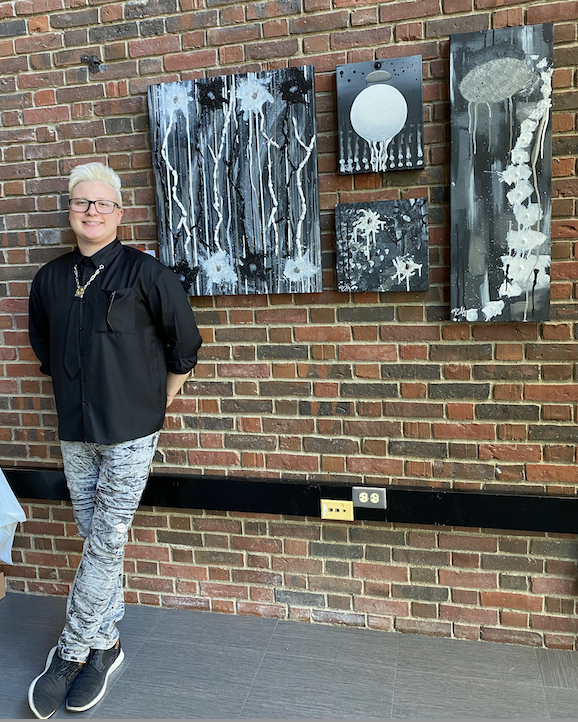Carney Institute (CI): Tell us a bit about yourself.
Kevin Connolly (KC): I grew up in Enfield, Connecticut. I went to undergrad at Eastern Connecticut State University where I studied biology and Spanish.
I always had a scientific mind but ever since I was little, I've done art continuously. I love painting, sculpting, drawing and have hundreds of pieces that I've made over the years. In college, I wanted to see if I could marry my love of art and love of science and landed on the idea of becoming a plastic surgeon. In undergrad, I studied collagen production in the skin as well as stem cell modeling and regenerative medicine.

I hadn’t really been thinking about brain science until my PI in my master’s program drew parallels between my existing interests in biology, art and research with brain science. These connections came into sharper focus when I began using confocal microscopy imaging which produces these incredibly vibrant and beautiful images.
CI: You’re currently a Ph.D. candidate in the molecular biology, cell biology, and biochemistry program investigating the use of human stem cell technology to address neurodegeneration and brain aging. How did art reenter the picture at this busy time?
KC: Kind of in an old-fashioned way. The Graduate Student Council sent out an email asking for applications for the STEAM Room. STEAM — science, technology, engineering, art and math — is a gallery showcasing STEM-related art pieces submitted by members of the Brown community. I liked the idea of balancing out my hard-hitting academic stuff with a fun passion project. So, I applied to the exhibit, was accepted and started working on my pieces.
CI: What was the application process like? Did you have to submit a portfolio or slides in advance?
KC: It was more of a proposal. They asked “What would you like to display? How does it relate to science more broadly and to your personal work more specifically?” I'm mainly a portrait artist, but I decided to pivot a bit and try something new. So, I submitted pieces that were more abstract and freeform.
CI: Tell us a bit about these pieces and your process of creating them.
KC: There were four pieces total, and I titled them “Gray Matters.” It was a series of black and white abstract acrylic paintings that highlighted various aspects of the nervous system with an emphasis on brain structure and composition.
Studying and understanding the brain can be messy, and I wanted to reflect that in the abstract nature of the pieces. So, I used brush strokes, drips and splatters intertwined with connective networks to provide a dynamic landscape that had multiple areas of focus, much like the brain itself.
CI: What are your thoughts about the old but pervasive idea that people have one-half of their brain which is more dominant and determines their personality, thoughts, and behavior? Left-brained people are more analytical and logical whereas right-brained people are more creative and free-thinking.
KC: I haven't really thought about it too much. I just know what I like doing and what I'm good at — art and science. Whether it's coming from one side of the brain versus the other, it works either way for me.
CI: Is art something you hope to incorporate into your career?
KC: Right now, I use art all the time in my research, whether it is taking lovely images on the microscopes or figure design for publications. I don't use BioRender software or anything. I hand make all my own images and figures. That will continue regardless of what I'm doing, and I’ll continue to paint, draw and sculpt.